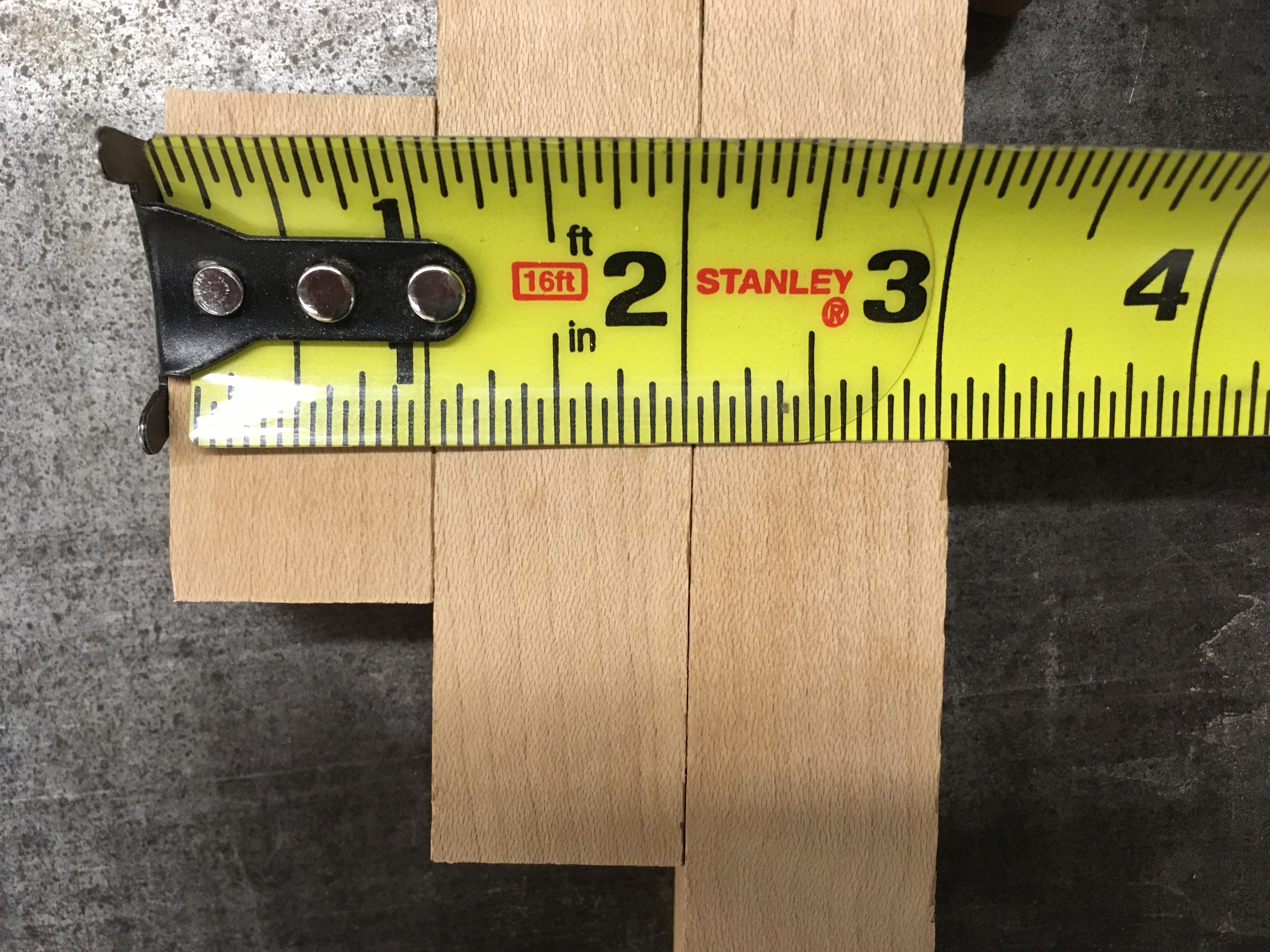I am a woodworker, and as a woodworker, I live by a certain set of norms which dictate that I be accurate, but not ridiculously accurate. After all, wood changes size all of the time, so there is a limit to how accurate we can be and how much we should really worry about it. For most of us, a few measurements in a job are critical and the rest of the pieces are fit to look good. We may use measurements as a jumping off point, but it isn’t uncommon to trim a bit here and plane a bit there.
When I am in the shop, I always have a tape measure hanging off of my pocket for anything that needs to be measured. I use it a lot, but mostly for rough measurements, like making sure a piece of wood will be big enough for what I have in mind. I also use it for more critical measurements, but I try my best to find ways to not use measurements when things start to get critical. For example, instead of measuring, I will use a scrap piece of wood as a spacer. That way I don’t need to worry every time about reading the tape measure wrong, and I know that all of my spacing will be very consistent.
As much as I try to avoid being fussy about my measurements, sometimes they need to be a little more accurate. One of the tools where accuracy is important is the planer. If I want 1″ thick wood, I want to know that it is 1″. Now, more engineery people might reach for their calipers, but for those of you like me, with only a tape measures on your belt, I have a very accurate way to make perfectly sized parts – just stack them up.

The target for this table saw run was 1″. The samples from the cut were close, especially the one in the middle, but adding all of them up confirms that they are a bit wide.
Here’s the logic. If your measurements are just slightly off, you may not notice it in just one piece, but as you add up the pieces you also add up the differences and they become much more obvious. Just run a scrap piece of wood through the planer, chop it into 3, 4 or 5 pieces, stack them up and measure them. 5 pieces of wood that are 1″ thick should measure 5″ – simple de dimple. If your 1″ thick board isn’t exactly 1″ thick, you will see it, even without calipers, and then you can adjust the thickness.

That’s better! Three pieces measure 3″ wide. The average is 1″. Let’s run some parts!
The beauty of this system is two-fold. First off, you don’t need to worry about having calipers (after all, those are for kids that work at Boeing and have really clean floors). Second, it gives you a more accurate real-world reading of what is coming out of your machine. We all know that a board coming out of the planer has dips and doodles in the wood and can range in thickness depending on the spot that you measure. Adding up several pieces of wood gives you not only a measurement that is accurate, but it is also closer to the average. We are only talking small amounts here, but if you are setting up to plane a bunch of lumber, it is great to know what the bulk of it is going to measure.

When running enough wood through the planer to make thousands of little sticks with thousands of little spaces, as in this wine cellar racking, accurate tool setup is critical and easy to verify by stacking up multiples.
I use this system to double-check measurements on other tools as well. It works great on the table saw to make sure that your 3″ wide board is really 3″. Instead of cutting just one sample board 3″ wide and determining that it looks really close, cut 3 or more and add them up. Assuming that you can do a little simple math, you will be able to tell if the 3″ mark is consistently spitting out 3″ boards and not 2-63/64″ boards.
When using my fancy measuring shortcut, there is one important rule to follow. Make sure the tongue on your tape measure is accurate or don’t use the tongue at all. If you don’t trust the tongue on your tape measure then take a reading starting at the 1″ mark to check the distance and then just subtract 1″ from your reading (and then hope that a holiday is quickly approaching that might lend itself to the arrival of a new tape measure).







Have something to say? Share your thoughts with us in the comments below.